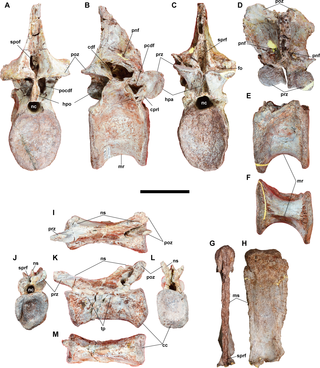@WFS,World Fossil Society,Riffin T Sajeev,Russel T Sajeev
A new carcharodontosaurian theropod (Dinosauria: Saurischia) from the Lower Cretaceous of Thailand

Skeletal reconstruction of Siamraptor suwati.Cranial elements were scaled to fit in with the holotype (surangular). Scale bar equals 1
Fossils discovered in Thailand represent a new genus and species of predatory dinosaur, according to a study released October 9, 2019 in the open-access journal PLOS ONE by Duangsuda Chokchaloemwong of Nakhon Ratchasima Rajabhat University, Thailand and colleagues.

Right premaxillae, NRRU-F01020003 (A–G), F01020002 (H–K) and F01020001 (L, M) in anterior (A), dorsal (B), medial (C, D, H, L), posterior (E), lateral (F, G, K, M) and alveolar (I) views. The rectangle in H indicates the area magnified in J to show premaxillary teeth. Abbreviations: ac, alveolar channel; en, external naris; fo, foramen; mp, maxillary process; nfo, nasal fossa; pa, possible pathology; snf, subnarial fossa; t, tooth. Scale bar equals 50 mm.
Carcharodontosaurs were a widespread and successful group of large predatory dinosaurs during the Jurassic and Cretaceous Periods and were important members of ecosystems on multiple continents. However, the fossil record of these animals is notably lacking from the Early Cretaceous of Asia, with no definite carcharodontosaurs known from Southeast Asia.

Dorsal vertebrae NRRU-F01020014 (A–D), F01020015 (E, F), and F01020016 (G, H) and a caudal vertebra NRRU-F01020017 (I–M) in posterior (A, F, L), right lateral (B, E), anterior (C, G, J), left lateral (H, K), dorsal (I), and ventral (F) views. Abbreviations: cc, chevron contact; cdf; centrodiapophyseal fossa; cprl, centroprezygapophyseal lamina; fo, foramen; hpa, hypantrum; hpo, hyposphene; mr, median ridge; ms, metaplastic scars; nc, neural canal; ns, neural spine; pcdf, prezygocentrodiapophyseal fossa; pocdf, postzygocentrodiapophyseal fossa; pnf, pneumatic foramen; poz, postzygapophysis; prz, prezygapophysis; spof, spinopostzygapophyseal fossa; sprf, spinoprezygapophyseal fossa; tp, transverse process. Scale bar equals 100 mm for A–H and 60 mm for I–M.
https://doi.org/10.1371/journal.pone.0222489.g010
In this study, Chokchaloemwong and colleagues describe fossil material from the Khok Kruat geologic formation in Khorat, Thailand, dating to the Early Cretaceous. These fossils include remains of the skull, backbone, limbs, and hips of at least four individual dinosaurs, and morphological comparison with known species led the authors to identify these remains as belonging to a previously unknown genus and species of carcharodontosaur which they named Siamraptor suwati.
Phylogenetic analysis indicates that Siamraptor is a basal member of the carcharodontosaurs, meaning it represents a very early evolutionary split from the rest of the group. It is also the first definitive carcharodontosaur known from Southeast Asia, and combined with similarly-aged finds from Europe and Africa, it reveals that this group of dinosaurs had already spread to three continents by the Early Cretaceous.
Ref: Duangsuda Chokchaloemwong, Soki Hattori, Elena Cuesta, Pratueng Jintasakul, Masateru Shibata, Yoichi Azuma. A new carcharodontosaurian theropod (Dinosauria: Saurischia) from the Lower Cretaceous of Thailand. PLOS ONE, 2019; 14 (10): e0222489 DOI: 10.1371/journal.pone.0222489
@WFS,World Fossil Society,Riffin T Sajeev,Russel T Sajeev



 October 15th, 2019
October 15th, 2019  Riffin
Riffin  Posted in
Posted in  Tags:
Tags: 